investigative
Mining what is mine: indigenous ancestral domain in the modern era
by:Jaime A. Bernabe II (published November 17,2024)
Mining is already an ancestral practice within the region of Benguet, Indigenous Peoples use
resource extraction methods that do not harm nature and strengthen their community by sharing the
blessing of its land. According to Robertson, the Ibaloi have been mining for centuries (1914). Becker
(1901) claims that gold coming from Luzon appears in the Chinese records from as early as the third
century AD, this is echoed by Pangasinan.
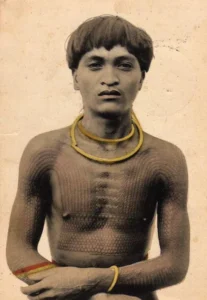
A Bontok man - 1908 postcard traditional view of young Igorot male wearing gold accessories
The earliest account of the Ibaloi gold collection method is from Spanish conquistador Captain
Quirante. In his Expedition to the Mines of the Igorrotes in 1624. He noted how in the rainy season, “that
wretched race, most of whom are miners, unite with their wives and children to wash the sand of the
streamlets that flow from the mountains” (Quirante 1624:276). This particular quote highlights the family
centered, communal, small-scale gold working of the Ibaloi for whom gold extraction is a community
based activity. historian del Castillo (1986, quoting Dr. Austin Craig).
According to Quirante (1624), Ibaloi digging tools were stakes fashioned out of hardwood and
formed into pickaxes. Tipped with iron or sharpened stone, these wooden pick axes were used by Ibaloi
miners to chip off inside their cramped mines. The gold mining technology utilized from the time of
Quirante (17th c.) up to the American contact period (late 19th c.) did not evolve. It remained traditional,
except for refined steel replacing the iron used in the tip of the pickaxes. Perhaps this was because there
was never really a need to extract extensively. Ibaloi mining remained largely sustainable.
The traditional methods of the Ibaloi are the lode mining method or laban, and the placer mining
method, or sayew. The simplest method is to pan for gold along the river and stream plains, particularly
in the dendritic drainage basin of the Agno and the Angalacan rivers.
Lawrence Wilson was an American Prospector who wrote an ethnography of Ibaloi gold working
early in the 20th century which describes some of the important equipment employed by the Ibaloi in
gold working method of breaking down rock to get the ore is quite impressive. As Wilson mentioned, they
would build a fire against the face of the rock and then suddenly dash cold water against the heated surface
to break it
In one of the municipalities of Benguet: Itogon, a mountainous gold-producing municipality, the
indigenous Ibaloy and Kankanaey Igorots of Itogon have engaged in mining and trading gold dating back
to the 10th century developing their own effective mining and processing methods to produce gold.
The Spanish colonizers took an interest in the gold of Igorots who were trading it with lowlanders.
Historical accounts say that the Igorots traded gold for salt, livestock, Chinese pottery, cloth, blankets, and
cattle from the lowland areas. Records of Spanish colonizers who arrived in the Philippine archipelago
during the 16th century report the existence of gold jewelry like necklaces, earrings, rings, and other
ornaments, which were normally worn by the local people.
Although conducting several expeditions into the Cordillera the Spanish colonizers failed and were
repulsed by Igorot resistance. Throughout the 300 years of Spanish colonization, the Cordillera region
enjoyed its independence by being able to practice its systems and way of life.
The Americans who took over the Spanish colonizers, however, were effective in colonizing the
Cordillera Region from 1899 to 1945. With that said the Americans during the 20th century fully introduced
toxic substances and large-scale mining which proliferated resource extraction that degraded the
environment and affected the living and working conditions of Indigenous Peoples with their traditional
gold mining activities.
With the presence and co-existence of traditional gold mining activities and small-scale mining of
the Indigenous Peoples and large-scale mining by big mining corporations, gold has become a major source
of conflict between the two parties.
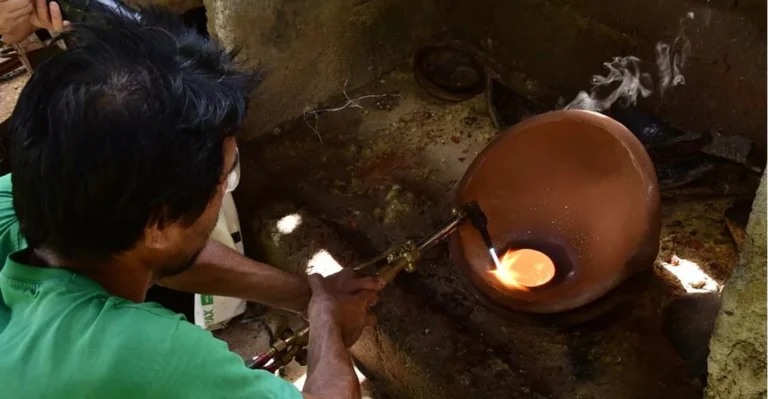
Traditional miner melting gold with a blow. Photo: Ompong Tan/Partners for Indigenous Knowledge Philippines (PIKP)
To this day, gold mining is a major industry and source of livelihood in the Cordillera Region
especially in the municipality of Itogon which is acknowledged as a major source of livelihood in the area
and an important aspect of their culture and identity. The municipality now hosts up to 8 large-scale mining
companies making the mining industry one of the top economic drivers of the Philippines and gold
producing countries in the world.
Scouring for minerals
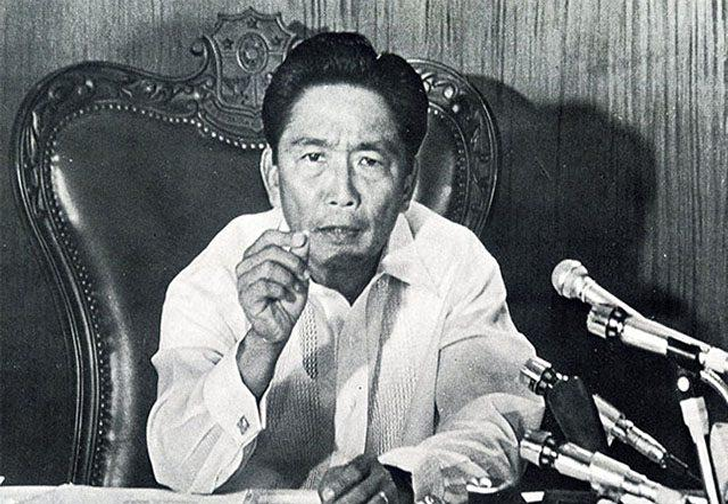
Dictator Ferdinand Marcos announces on live TV on the evening of Sept. 23, 1972, that he has imposed martial law throughout the country. (Photo from the Official Gazette of the Republic of the Philippines)
During the term of the late Ferdinand Emmanuel Edralin Marcos Sr. Presidential Decree No. 463:
Mineral Resources Development Decree of 1974 signed on May 17, 1974, which establishes state
ownership of mineral deposits in the Philippines and provides regulations for the exploration,
development, and exploitation of mineral lands, while also prohibiting the imposition of taxes, fees,
rentals, royalties, or charges on mining activities.
Due to such, Itogon-Suyoc Resources Inc. (ISRI) was able to acquire and meet the requirements
for a Mining List Contract (MLC) in 1987 granting them certification and a permit to operate mining
activities within the municipality of Itogon with the validity of 25 years.
According to the ISRI mineral profile of 2021, ISRI’s mineral production spans 155 kilograms of gold
worth 442 million pesos and 31 kilograms of silver worth 1.3 million pesos with mineral exports worth
9.01 million US dollars.
Their MLC however expired in 2012 which halted ISRI’s mining operations and comes the provision
of the new Philippine Mining Act of 1995 also known as the Republic Act No. 7942 which states that all
MLCs will be converted to Mineral Production Sharing Agreement (MPSA) due to such ISRI is on the process
of complying it’s Application for Product Sharing Agreement also known as APSA 103.
In June 2015, Apex Mining Co. INC acquired ISRI becoming the assignee company of all mining
assets of the former Itogon-Suyoc Mines, Inc (ISMI).
ISRI’s application for the MPSA however also came to a halt due to the moratorium that was
imposed by Ma’am Gina Lopez during her appointment as director of the Philippine Department of
Environment and Natural Resources in 2016 putting all mining tenements into status quo. The moratorium
however was lifted by 2018 which continued the process of the APSA 103 process of the ISRI mining
company.
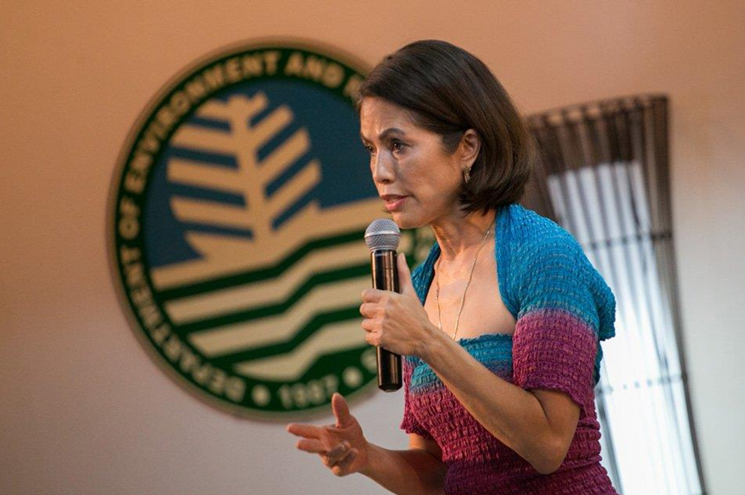
Gina Lopez, when she was Department of Environment and Natural Resources Secretary (Source: ABS-CBN)
Rejected then reconsidered
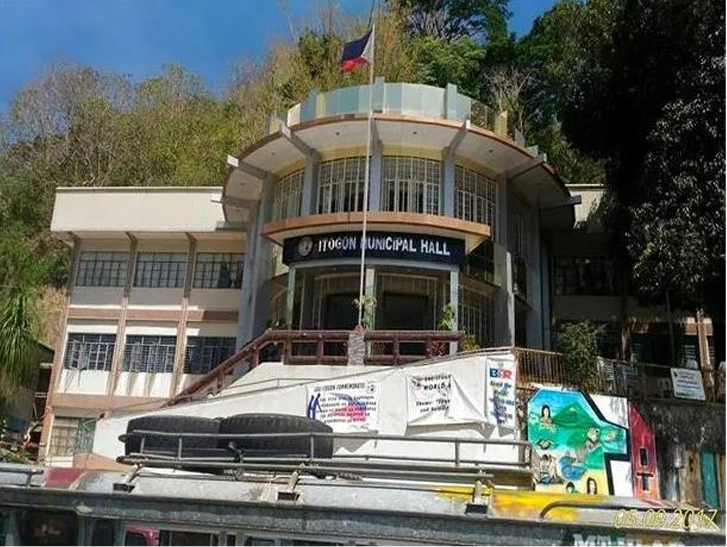
Itogon Municipal Hall (Photo Credit: Mayor’s Office )
With the lift of the moratorium, ISRI started to conduct Community Assemblies in all nine (9) barangays of Itogon, it was however delayed due to the Typhoon Ompong tragedy in Itogon followed by the COVID-19 pandemic. Due to the delay of the process and continuation in early 2021, ISRI conducted a refresher Information Education Campaign (IECS) in all the barangays of Itogon. After the IECS a consensus started and was disapproved by the three Council of Elders/Leaders (CoEL) of the barangay Poblacion, Virac, and Ampucao due to being directly impacted by the mining expansion of the company considering that the barangays mentioned consisted of hundreds of household, the other CoEL supported this disapproval, therefore, the APSA 103 application of ISRI was rejected through a Resolution of Non Consent.
Meanwhile, a Motion for Reconsider (MR) was filed by ISRI which called for a dialogue between the Itogon Indigenous Peoples Organization (IIPO), CoEL of the 9 Barangays of Itogon, and representatives of ISRI which were held at the Itogon Training Center – Bua on May 30, 2022, discussing the resolution of the non-consent that the CoEls of the Itogon Ancestral Domain adopted.
This opened the possibility of ISRI to process their APSA 103 mining application which according to the residents and an article written by UP Baguio Outcrop, the consultation happened “without the consultation with other residents.”
IP outcry
The National Commission on Indigenous People (NCIP) also released a certification on October 23, 2023 that certified that the Itogon People’s Organization – IIPO per record and report from the NCIP – Benguet Provincial Office has not renewed its former 2007 Certificate of Registration (COR) under section 18 of the prevailing NCIP Administrative Order 2 series of 2012, therefore the IIPO during the consensus with ISRI was not an authorized indigenous group that represented the residents of Itogon, minority groups would argue.
“Iyong sa consensus ay dapat between the IPs, the community, and the [National Commission on Indigenous People]. Ang nangyari… ang consensus naging negotiation na. Na-itsapuwera ang community, ang mga affected na tao,” Luciano Manuel, president of Dalicno Indigenous Peoples Organization (DIPO), said in an interview.
During the dialogue, ISRI addressed 14 issues and concerns that led to non-consent resolution. An open forum was conducted where representatives of the Mines and Geosciences Bureau – Cordillera Administrative Region (MGB-CAR) and ISRI answered and clarified their queries and concerns.
This continued into a series of dialogues that continued until 2023 when the CoELs of the 3 directly affected barangay changed their decision and approved the negotiations therefore pushing through the Free Prior Informed Consent (FPIC).
Community leader Allan Sabiano elaborated that in the consensus-turned-negotiation, ISRI offered job opportunities to the residents and P10 million to IIPO, which he called a form of “bribery”.
“Pupunta sila para mag-offer ng mga trabaho kagaya na rin ng pagbibigay sa IIPO ng ₱10 million kahit hindi pa tapos ‘yong [Memorandum of Agreement] na pipirmahan ng NCIP kaya ang lumalabas, para itong bribery,” Sabiano said in Ilocano.
The IIPO elder continued the series of meetings and consultations until the 5th and final formal FPIC negotiation on August 2, 2023, where the other CoELs agreed to have the Memorandum of Agreement (MOA) translated in Ibaloy due to the NCIP Guidelines which stated that it must be translated into one of indigenous languages recognized in Benguet, which was then reviewed on August 15, 2023.
The MOA signing was supposedly done on August 18, 2023, but due to a petition letter sent by Sitio Dalicnno, Simpa, and Lolita Kankanaey Elders to the NCIP Regional Director Atty. Atanacio Addog and IIPO President Mrs. Rosita M. Bargaso therefore postponing the MOA signing.
According to the petition letter that was sent on August 16, 2023, it reads that the Kankanaey tribe of sitio Dalicno, Simpa, and Lolita, Ampucao Itogon Benguet did not give their consensus approval of the project because they were not properly informed on the provisions and contents of the MOA that was drafted during the consecutive FPIC negotiations hence they were given a chance to submit their term and conditions on August 22, 2023.
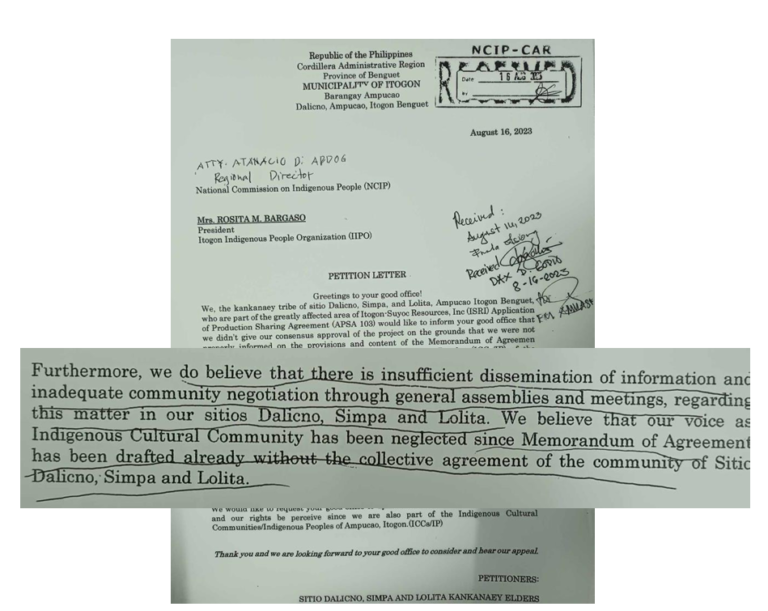
Petition Letter by Sitio Dalicno, Simpa, and Lolita Kankanaey Elders (August 16, 2023)
A Request for Dialogue was then later made by the Ampucao Indigenous People’s Organization requesting to discuss their concern with the APSA 103 mining expansion that aims for a 581-hectare expansion of ISRI’s 35-hectare mining site in Barangay Poblacion. The request was signed by more than 300 residents of the community and aimed to discuss three main issues namely: The protection of Livelihoods and Resources; Mitigation of Environmental Impacts; and Sustainable Development.
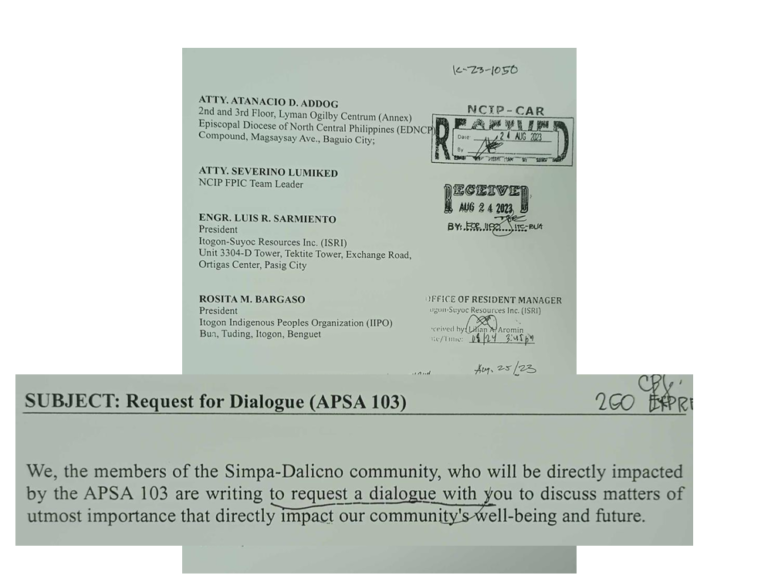
Petition Letter by Ampucao IPO Representatives requesting Dialogue (August 24, 2023)
MOA matters
A copy of the MOA that the Mountain Collegian obtained shows that host ICCs/IPs are entitled to
receive a yearly royalty fee of 1.25 percent from the company based on the annual audited financial
statement. Sixty-five percent will accrue to the ICCs/IPs of Ampucao, Poblacion, and Virac, and 35 percent
to the other barangays of the Itogon ancestral domain.
The host ICCs/IPs will also receive a one-time goodwill money of P10 million upon signing of the
MOA, P2.5M financial assistance to the ICCs/IPs of Ampucao, Poblacion, and Virac, three college
scholarships for the host ICCs/IPs for the duration of the MOA, annual subsidy of P300,000 to the IIPO but
will stop upon payment of royalty; P2M assistance for the construction of the IIPO building.
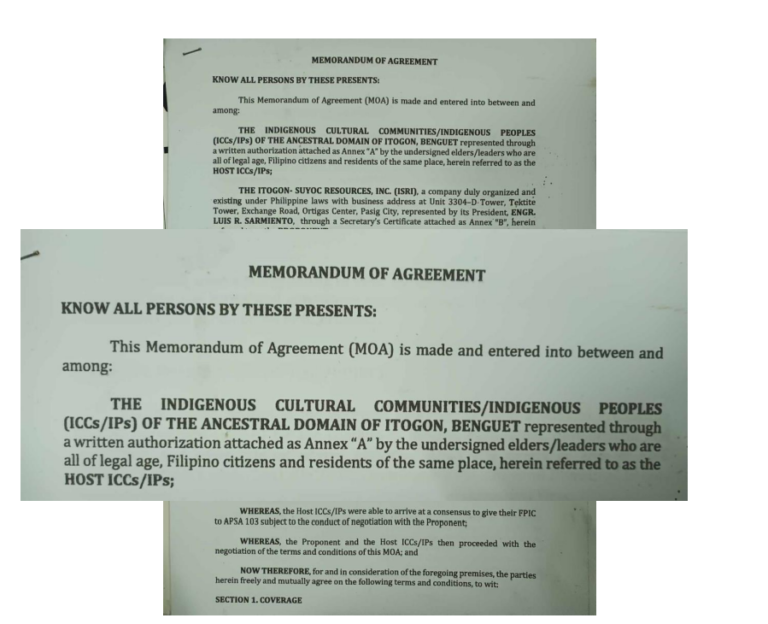
Memorandum of Agreement drafted and to be signed by CoELs
According to an article written by Herald Express, all the concerns had been addressed in the MOA between the ICC/IPs of the 9 barangays compromising the Itogon Ancestral Domain that was represented by the IIPO who are recognized holders; and proponent. It also provides for periodic reviews of the agreement as room for improvement of the conditions in the future.
ISRI also assured that there will be no displacement and they will not conduct mineral exploration in areas that are designated as no mining zones and built-up areas.
The MOA was then later signed by the appointed Council of Elders on September 20, 2023, with the FPIC team resulting in the community condemning the NCIP – CAR for not informing them about the said MOA signing.
ISRI emphasized that it isn’t just 5 months of negotiations being continuously posted on social media and attended by representatives of the 9 barangay Indigenous People’s Organizations (IPO) but considering all the months spent on IEC and consultations in all barangays, that’s 5 long years of work. Considering that the FPIC process started in 2014, the FPIC process is 9 years old and counting. The company stipulated that with what had been outlined as the history of the FPIC, there is no excuse for ignorance to those who claim to have not been informed about the said application.
Pettetions and the present
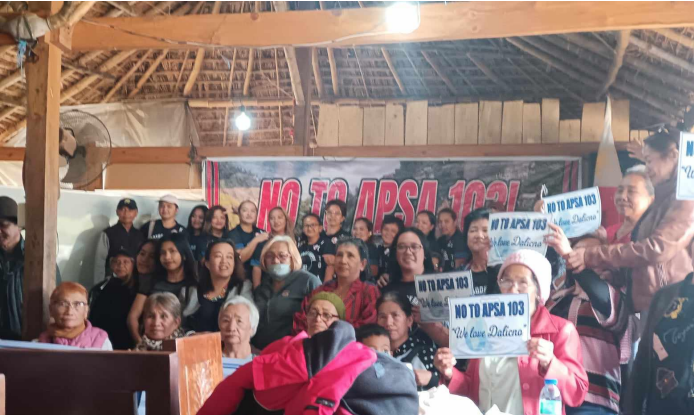
The Dalicno indigenous community is holding a press conference on their opposition to the Application for Production Sharing Agreement 103 (APSA 103) at Ibaloi Heritage Park, on February 13, 2024
The residents then submitted an appeal regarding the “defective” procedure on October 9 last year followed by six more appeals which state that the actual residents were “deliberately disenfranchised.”
NCIP-CAR Regional Director Atanacio Addog, however, dismissed the appeals and petition of the residents on January 3, 2023, which was months past the 10-day deadline for responding to a complaint.
Another petition that was made by the ICCs/IP of Dalicno and members of ICC/IPs dwelling inside the Ancestral Domain of Itogon stipulated four (4) assignments of error of the Regional Director, namely: Failing to meet the prescription period under the section 68 of the NCIP Administrative Order 3 series of 2012 in the FPIC guidelines, erred in his “Resolution” in addressing the violations of the FPIC team under sections 4[b], 5[f], 22, 27, and 34 of the FPIC guidelines, erred on not elevating the FPIC report without the favorable findings of the Regional review team according to section 28 of the FPIC guidelines, and erred by not rescuing/ inhibiting himself from endorsing the FPIC report to the Ancestral Domain Office and Legal Affairs office.
The community was then also prompted to bring the issue to the NCIP central office, which later directed the regional office to review the issues raised mainly by the Dalicno Indigenous People Organization (DIPO)
In an interview with the Section Chief Mining Tenement Evaluation Unit, Ma’am Virginia Brienos, stated that the appeals and petitions of the DIPO do not slow down the process of the APSA 103 due to it being able to undergo due process and also result in them ignoring the petitions of the DIPO. “It’s dangerous since the quarry is situated above while the houses are below it,” said Romy Agno about his apprehension of a landslide if ISRI is permitted to explore, in a press conference on Ibalio Heritage Park, Baguio City last February 13, 2024.
Elder Domingo Layta also lamented that IIPOs giving their consent has divided the community. “The people of Dalicno are fighting one another due to this issue,” he said In Ilocano.
Meanwhile, ISRI said all the processes to obtain the consent of the ICCs have been complied with. “True to our goal, the MOA contains win-win provisions for the Itogon ancestral domain and ICCs/IPs, residents of Itogon, and the company,” ISRI said.
To this day the indigenous people and minority communities are still fighting for the freedom of their land and resources while resisting large-scale companies and corporations that they believe would herald a great destruction of theirs lands natural beauty and bounties.
